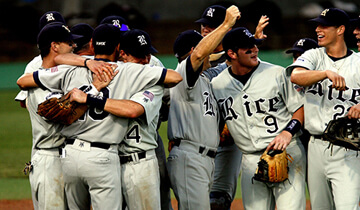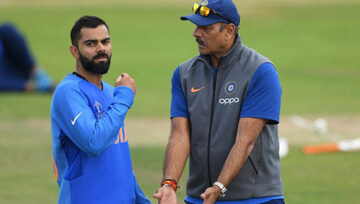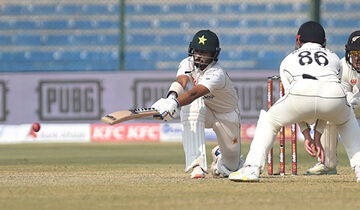What is a Fullback?
A fullback is a defender that plays on the right or left side of a back four in football. Traditional fullbacks were defenders first and foremost, responsible for preventing attacks down the wings and covering for the center-backs. They would make overlapping runs to provide width to attacks, but were not relied upon to be major creative forces.
The Evolution to Attacking Fullback
In the modern game, the fullback role has evolved to take on more attacking responsibilities. Fullbacks are now expected to push upfield and provide width in possession, functioning almost as wingers. This allows teams to overload the flanks and create overloads against the opposition defensive line.
The trend towards attacking fullbacks has been enabled by tactics like zonal marking, which gives fullbacks more freedom to vacate their defensive positions. It has also been driven by elite attacking fullbacks like Daniel Alves, Marcelo, and Jordi Alba demonstrating how devastating their creativity and crossing ability can be in the final third. Their success has inspired coaches to encourage younger fullbacks to take risks and emphasize attack over defense.
While expected to join the attack and provide dangerous crosses into the box, modern fullbacks also need the mobility and work ethic to quickly track back into their defensive shape. The best attacking fullbacks combine physical attributes with excellent technique, vision, and passing ability to effectively support both attack and defense. Players like Trent Alexander-Arnold and Andy Robertson excel at making late runs into the box, whipping in crosses, and linking play through the middle. Their attacking threat makes life difficult for opposing teams trying to contain them.
The fullback role has certainly changed drastically from its origins as a purely defensive position - the modern attacking fullback shows how position specialization continues to evolve in football. Teams now rely on dynamic, offense-minded fullbacks to provide width and contribute significantly in the final third.
Defining the Fullback Role
Fullbacks play on the wings, widest defenders on the pitch.
Fullbacks play in the wide areas of the field, lining up along the touchlines on either side of the pitch. They are the widest defenders and spend most of their time patrolling the flanks. While centerbacks and defensive midfielders guard the middle of the field, fullbacks are responsible for defending the wings and preventing attacks from wide areas. Their key duty is to prevent opposing wingers from getting crosses into the box and combining with other attackers. Fullbacks cover the entire wing, supporting attacks when their team has possession and tracking back to defend when the opponent has the ball. They cover a huge amount of ground over the course of a match.
Primary duty is defense - marking wingers, stopping crosses, covering their side.
Though fullbacks occasionally join the attack, their main responsibility is defense. They must track the runs of opposing wingers trying to beat them down the line or cut inside. Tight marking and positioning are essential to stop wingers from centering the ball or taking shots from wide positions. Fullbacks look to force wingers down the outside or away from the middle of the field where they are less dangerous. Fullbacks also must prevent wingers from crossing by closing them down quickly or blocking attempted crosses. They work hard to show wingers down the line and away from their strong foot. In addition to marking individual wingers, fullbacks must maintain their tactical shape and discipline to prevent gaps in the defense. They shut down any attacks or combinations developing down their side of the field.
Secondary duty is attack - overlapping runs, crosses, supporting build up.
While defense comes first, fullbacks are increasingly important to building up play down the flanks in the modern game. When their team has possession, fullbacks will push forward to offer width in attack. By making overlapping runs beyond the winger, fullbacks stretch the defense creating space for midfielders and forwards. From advanced positions, fullbacks can deliver dangerous crosses into the box. Their deep runs from the back also aid in linking defense to attack during build up play. However, fullbacks must choose forward runs carefully and maintain balance. They can only attack if they are not leaving their defensive duties exposed. Timing overlapping runs and balancing offense and defense is key.
Requirements: pace, stamina, positional discipline, technique.
Fullback is one of the most physically demanding positions. They must have the pace and stamina to constantly run up and down the wing for 90 minutes. Quickness allows them to recover defensively and contribute to attacks. Fullbacks cover more ground than any other players on the pitch. Their fitness directly impacts their ability to fulfill both defensive and offensive duties. In addition to athleticism, fullbacks must have strong technical abilities. They must be comfortable on the ball and able to deliver accurate crosses and passes. Timing and decision making are also vital skills for fullbacks. They must choose the right moments to go forward based on the game situation. Mastering positioning, shape, and tactical awareness enables fullbacks to dominate their flank. The best fullbacks combine physical attributes with technical qualities and football intelligence.
Fullback Responsibilities
Defense:
Mark the winger 1v1.
One of the main defensive duties of a fullback is to mark the opposing team’s winger. The winger will often be positioned on the touchline and look to take on the fullback in 1v1 situations. As a fullback, it is critical to get tight to the winger and not allow them space to dribble or cross. Fullbacks must have good agility and speed to stick with tricky wingers in 1v1 battles. Remaining goal-side of the winger and not lunging into tackles is important to avoid being easily beat. Patience and smart defensive positioning are key.
Prevent crosses on their side.
Another key duty is preventing dangerous crosses from their side of the field. Wingers look to get into advanced wide areas and whip in crosses, so fullbacks must track their runner and either block the cross or force the winger away from the byline. Good fullbacks will look to show the winger down the line and away from the box rather than letting them cut inside. Fullbacks also have to communicate well with their center backs to ensure someone picks up the opposing striker attacking the ball in the box. Cutting out crosses limits the opponent’s attacking chances.
Provide cover on opposite side.
In addition to marking their flank, fullbacks must also provide cover on the opposite side. If the ball gets switched to the far wing, the weakside fullback should pinch in centrally to mark any open runners in the box. This helps the center backs deal with crosses and prevents opposition players from finding dangerous pockets of space. Fullbacks work in tandem with each other to cover open areas and shut down crosses no matter which side they come from.
Attack:
Contribute to build up play.
Modern fullbacks are also expected to contribute significantly to their team’s build up play in attack. By advancing upfield into the opponent’s half, fullbacks give their team passing options out wide to stretch the defense. Fullbacks will often receive the ball in space and have time to pick out forward passes. Their distribution and link-up play from wide areas helps the team maintain possession and build attacks. Intelligent positioning and passing is vital for fullbacks getting involved in build up.
Make overlapping/underlapping runs.
One of the main attacking weapons for fullbacks is making overlapping or underlapping runs down the flank. Overlapping means sprinting around the outside of the winger to create 2v1 situations against the opponent fullback. Underlapping refers to making an inside run between the winger and central midfielders. Well-timed overlapping runs allow the fullback to receive the ball in advanced wide areas and deliver crosses. Underlapping gives the fullback space to cut inside and shoot or combine with teammates. Quality movement off the ball is key for fullbacks providing attacking width.
Provide width and crosses.
Fullbacks stationed out wide give their team valuable attacking width against compact defenses. By staying wide, fullbacks stretch the opponent backline and open space through the middle for teammates. They give the winger or midfielders options for short passes. Fullbacks are also relied upon to be major sources of crosses into the box, aiming for the strikers or onrushing midfielders. Early crosses from advanced positions allow teams to create goal-scoring chances before the defense is set. Accurate and well-timed crosses are an important skill for fullbacks in attack.
In conclusion, modern fullbacks have a hugely demanding role balancing defensive and attacking duties. They must excel in 1v1 situations, prevent crosses, help build up play, make overlapping runs, and provide dangerous crosses. The athleticism, technique, positioning sense and decision-making required makes fullback one of the most challenging positions on the pitch. Elite fullbacks like Trent Alexander-Arnold and Alphonso Davies show the all-around ability necessary to dominate the flank on both ends of the field. As the game continues to evolve, top fullbacks are becoming even more critical to their team’s success.
Key Traits of a Fullback
Fitness
Fullbacks need excellent stamina and endurance to cover the entire flank for the full 90 minutes. They are tasked with sprinting up and down the touchline to provide width in attack and track back to defend. This requires tremendous fitness to maintain the work rate. Fullbacks cover the most distance of any outfield player on average during a match. They need the engine to fulfill their box-to-box responsibilities.
Defending
Strong defending is essential for fullbacks. They need to be capable 1v1 defenders to deal with tricky wingers in isolated situations near the touchline. Tackling technique, anticipation and positioning are key. Fullbacks also provide defensive width and support to the center-backs. Their defending prowess provides additional security at the back. Sound defenders who can win individual battles out wide are perfectly suited for the fullback role.
Positioning
Intelligent positioning is crucial. Fullbacks must balance their attacking instincts with defensive duties. They need to pick the right moments to overlap and provide crosses, versus sitting deeper to protect against counters. Disciplined positioning, reading the game and making correct decisions is imperative. Fullbacks can’t afford to be caught too far upfield. They enable the team shape to transition smoothly between attack and defense based on their positioning.
Pace
Pace is a huge asset for fullbacks. They need the speed to keep up with quick opposition wingers and make recovery runs if caught out of position. Pace allows fullbacks to cover ground efficiently and join the attack at speed to provide an extra threat. It also aids in chasing down loose balls and making last-ditch recovery tackles. Fullbacks are often the fastest players in a team to cope with the transition speed and ground they must cover on the flanks.
Best Fullbacks Ever
Cafu
Cafu is widely regarded as one of the greatest fullbacks of all time. The Brazilian played for São Paulo, Real Zaragoza, Palmeiras, Roma, and AC Milan during his illustrious career.
Cafu is best known for his time with the Brazil national team, for whom he amassed 142 caps, a record for an outfield player. He appeared in four World Cups from 1994 to 2006, lifted the trophy twice in 1994 and 2002, and holds the record for most World Cup matches played with 21. Cafu was named in the FIFA World Cup All-Star Team a record three times, highlighting his consistency at the highest level.
At club level, Cafu won several major honors including the Copa Libertadores with São Paulo, the Scudetto with Roma, and the UEFA Champions League with Milan. His overlapping runs, pinpoint crossing, stamina, and leadership made him one of the premier right backs of his generation.
Paolo Maldini
Paolo Maldini is arguably the greatest left back in football history. The Italian legend spent his entire 25-year career with AC Milan, making 902 appearances for the Rossoneri.
Maldini was renowned for his elegant defensive skills, reading of the game, and ability to surge forward. He formed part of Milan’s impenetrable backline during the club’s glory years in the late 1980s and 1990s. Maldini won 7 Serie A titles and 5 European Cup/Champions League titles during his time at the San Siro.
For Italy, Maldini earned 126 caps and appeared in four World Cups. He captained the Azzurri to the 1994 World Cup final as well as Italy’s route to the Euro 2000 final. Maldini’s combination of leadership, consistency, and longevity place him on the Mount Rushmore of football fullbacks.
Tips for Aspiring Fullbacks
Practice 1v1 Defending Against Different Types of Wingers
As a fullback, one of your main responsibilities is to defend against opposition wingers in 1v1 situations. Different types of wingers pose different threats, so it’s important to tailor your approach accordingly.
Against quick and tricky dribblers, you need to stay patient and not commit too early. Give them a yard of space and look to force them wide rather than letting them cut inside. Time your tackle well when the opportunity arises. Against strong and direct wingers, you may need to engage tighter and physically to stop them running at your back line. Focus on closing down the space and blocking shots or crosses.
Dedicate time in training to practice 1v1 defending in game-like scenarios against teammates with different playing styles. Work on your footwork, body position and decision making when to jockey, tackle or show the winger wide. Sharpening these defending skills will give you the tools to handle any winger.
Develop Fitness Through Additional Conditioning
Fullback is one of the most demanding positions physically, requiring immense stamina and speed. To reach the fitness levels required, additional conditioning on top of regular football training is essential.
Integrate long interval runs into your schedule to improve aerobic capacity. Work on accelerations and maximal sprints to boost that initial burst of pace needed when covering defensively. Gym work such as squats, lunges and deadlifts will build the strength required in those tiring final minutes.
Core sessions enhance balance and reduce injury risk from twisting and changing direction. Yoga and pilates will aid flexibility. Ensuring good recovery with sufficient sleep, nutrition and massage is also key. With a structured conditioning program tailored to the specific demands, you will develop the fitness to maintain high energy levels for the full 90 minutes.
Work on Attacking Qualities - Crossing, Dribbling, Passing
While defending is a fullback’s priority, contributing in attack is increasingly important in the modern game. Work on key attacking qualities like crossing, dribbling and passing to become a threat going forward.
Practice whipping crosses from deep and under pressure into the box. Vary your crosses - low, driven, to the far post or penalty spot. Drill dribbling skills like close control, changing pace and beating a defender. Play short sharp passing combinations with midfielders and link play down the flanks.
Study and learn from top fullbacks like Trent Alexander-Arnold, Joao Cancelo and Alphonso Davies on how they seamlessly integrate attacking. With polished technical skills, vision and delivery, you can provide an extra dimension to your team’s attack.
Study Footage of Current Top Fullbacks
One of the best ways to improve your game is to study footage of the current top fullbacks in the world. Focus on their positioning, technique and decision making.
Watch how they support attacks, choosing the right moments to overlap or underlap. Analyze their defending 1v1 and how they win the ball back. Look at their communication and coordination with center backs.
Pay attention to their body shape when receiving passes, technique striking crosses and passing range. Study patterns of play they combine in with teammates. Look for small details that you can incorporate into your own game.
Learning from the best fullbacks lets you continually refine your skills and game intelligence. Watch footage before and after your own matches to better read situations and execute the right solutions. With the tricks of the trade from top fullbacks, you can fast track your own development.
Conclusion
The fullback position has evolved from a purely defensive role into a dynamic, multifaceted one essential to both attacking and defending in the modern game. While defending their flank and preventing crosses remains critical, fullbacks are now judged on their ability to join the attack through overlapping runs, combination play, and delivery into the box. This increased attacking emphasis has transformed fullback into one of the most physically demanding roles requiring immense stamina, pace, and technical ability. Players like Trent Alexander-Arnold demonstrate the well-rounded attributes necessary to excel. Aspiring fullbacks must dedicate time on the training ground to hone their 1v1 defending, fitness, attacking qualities, and study top reference points. Although more exposed, the modern fullback who masters balancing overlapping runs with sound defensive positioning can be a true difference maker for their team. The ever-increasing attacking responsibilities placed on fullbacks will likely continue as the game evolves. However, the defensive foundation of the role should not be neglected. The best fullbacks both enable their team’s attack while remaining defensively sound down the channel. Mastering this balance is the key challenge for the position.







































